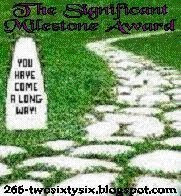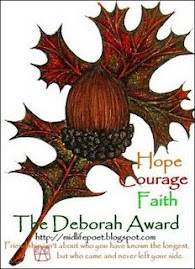I've mentioned a connection to the Lakota people in South Dakota, and Patsy (& a few others) have asked me about that. So I am devoting today's post to something that really is my heart. To keep this from being the longest post ever written I will condense parts of the story leading up to the present.
My paternal grandma was Native American, yet because of my parent's divorce I did not grow up around that side of the family. When I got older I sought out native friends and mentors to better understand that part of myself. I ended up befriending a woman who married a Lakota man and when they needed to go out to the reservation to help with a sick relative, I went with them per their invitation.
What I saw and experienced there changed my life and continues to do so every day. I will start with the facts and finish with how I am involved and what I do to help. The Pine Ridge Reservation in South Dakota, home of the Oglala Lakota (Sioux), is a land of contradictions, a place as poor in resources as it is rich in culture and history.
The Pine Ridge Reservation in South Dakota, home of the Oglala Lakota (Sioux), is a land of contradictions, a place as poor in resources as it is rich in culture and history.
The terrain is stunning enough to bring tears to ones eyes. The sunlit prairies with their grasses and wildflowers, the mesas, the hills and cliffs, the picturesque valleys dotted with red cedar-- all of these take your breath away. Yet as one travels the Pine Ridge Reservation and meets with people there, a heart-piercing truth is revealed -- the scenic beauty of South Dakota is home to the poorest people in America.
Most of the land on Pine Ridge is rocky and the soil of poor quality. Most of the terrain is not conducive to farming, ranching or industry.
39 percent of Pine Ridge homes have no electricity. Most of the homes are of poor quality and many lack insulation, indoor plumbing, or central heat.
The average Lakota family has an annual income of under $4,000
If, like most Americans, you have been completely unaware of this, please read on and prepare for greater shocks:
Lakota people have the lowest life expectancy of any group in the Western hemisphere outside of Haiti
Lakota people have 8 times rate of diabetes (compared to the rest of the USA)
Lakota women have 5 times the rate of cervical cancer
Lakota people have twice the rate of heart disease and 8 times the rate of TB
The rate of suicide among adults is twice the national average, while their TEEN suicide rate is four times the national average
The infant mortality rate among Lakota Indians is 4 times the national average
The Pine Ridge Reservation is the size of the state of Connecticut, and yet the only Library is at Oglala College in Kyle. The reservation has no banks, no department stores, no movie theaters, etc.
You cannot take the bus and get a job at Walmart. There is no bus. There is no Walmart.

Per capita funding for Native American healthcare is 60% less than all other Americans and 50% less than federal prisoners. In total, there is a $900 million backlog in unmet needs for American Indian health facilities.

It was shocking to find out that people in America live this way when each year, millions of dollars leave here to aid other countries.
In addition to being moved into action regarding how the elders and children live, I also fell in love with Lakota culture -- spirituality, art, music, ceremony and tradition. This is a much bigger part of my life than I can relate in this one post.

According to a report issued by the U.S. Commission on Civil Rights, one in five homes on reservations lack complete plumbing facilities and less than 50% are connected to the public sewer system. This has lead to the creation of numerous health and environmental hazards. Additionally, Over 30% of American Indian families live in overcrowded housing and 18 percent are severely overcrowded with 25-30 individuals sharing a single home. These rates are over six times the national average.
Approximately 40% of housing on reservations is inadequate according to the federal definition, compared to only 6% nationwide. American Indians have the highest rate of home loan denial of any race in the United States; nearly 25%.
 Alcoholism and drug abuse are huge problems on the rez. We want to help but we don't want to enable self-destructive habits by throwing money around without understanding where it is going.
Alcoholism and drug abuse are huge problems on the rez. We want to help but we don't want to enable self-destructive habits by throwing money around without understanding where it is going.
Imagine being a kid and every day when you come home from school, this is where you go.
 This is one such family and I go this visit them every summer and attend Sun Dance while I am out there. That's me in the back and this was taken this past July.
This is one such family and I go this visit them every summer and attend Sun Dance while I am out there. That's me in the back and this was taken this past July.
Next, I could not do this alone, so my Best Friend, Jeanne, has helped me on this path. She is not Lakota but is native and was raised in tradition. She is a light in my life, believe me-- but of course, that's yet another story.


























Wow, thanks for sharing this Lori-Ann. You are an excellent writer as I felt like I was right there with you seeing all the pain and suffering these people are experiencing. Your comment about giving millions to other countries when this environment is right there in their back yard hit home to me.
ReplyDeleteThese types of posts are the reason that I find you so inspiring and proud to call you my "blog" friend. Please stop by my place for another blog award that you so rightly deserve.
I had no idea. That's so informative Loriann. I'm looking forward to seeing your Ebay links.
ReplyDeleteHope you have a fabulous, successful weekend... stop by my blog for your award. Sandra got here first but I gave it to you first lol!
Thanks so much for this. To say the statistics are shocking is as understatement... I'm ashamed to say that all I know about the native people is what I have read in a book I bought at The Museum of the Rockies, the last time I was over...
ReplyDeleteWill email you privately later...
Patsy
Thanks for sharing this. I have a blog-friend I'd written with for almost a decade now who is out there on Pine Ridge. She also sells on EBay (bead work). I'm Mohawk myself, but was adopted by a white family, so I feel (sadly) totally divorced from my culture. On the other hand, there are times I feel blessed that I didn't grow up with the poverty and violence on the rez. It's sad that the two (tradition and poverty) go hand in hand like that.
ReplyDeleteWow, I had no idea. I can tell this is really something you care about. I think it is great doing what you are doing.
ReplyDeleteI had absolutely no idea. I just assumed that people who lived on reservations were like those in California. With lots of money from the casinos. Thank you for sharing. Very compelling post.
ReplyDelete